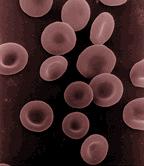Biological clocks play an essential role in physiology and in controlling behaviour - from regulating sleep cycles in animals to balancing photosynthesis in plants. Now, research published in Nature suggests that our model of how the clock works might be wrong.
There are two key features that define a biological clock mechanism: It must compensate for temperature, as chemical reactions will generally run faster at higher temperatures; and it must be able to synchronise to external stimuli such as light and dark.
 Current models of circadian clocks rely heavily on feedback loops based around transcription and translation - the "reading" of DNA and subsequent protein production. Essentially, the products of transcribing "clock" genes regulate how associated genes are expressed, and this leads to a roughly 24 hour feedback loop. Post-transcription contributions to the circadian clock have been observed, but the basic DNA-led feedback mechanism is still assumed to be the major driving force in biological clocks.
Current models of circadian clocks rely heavily on feedback loops based around transcription and translation - the "reading" of DNA and subsequent protein production. Essentially, the products of transcribing "clock" genes regulate how associated genes are expressed, and this leads to a roughly 24 hour feedback loop. Post-transcription contributions to the circadian clock have been observed, but the basic DNA-led feedback mechanism is still assumed to be the major driving force in biological clocks.
Now, John O'Neill & Akhilesh Reddy at Addenbrookes Hospital in Cambridge have shown that non-transcriptional mechanisms are capable of maintaining a clock in human red blood cells, which have no nucleus and are therefore incapable of transcription.
To study clocks in red blood cells, they looked to a family of antioxidant proteins called Peroxiredoxins or PRX. These are responsible for clearing reactive oxygen species like peroxide from the cell. A subclass of PRX molecules undergo an oxidation/reduction, also known as a "redox" reaction, with a regular cycle.
To assess PRX's suitability as a clock molecule, O'Neill and Reddy took red blood cell samples from healthy volunteers, and stored them in darkness and at a constant temperature. This enabled them to sample the cells every 4 hours, and confirm that the redox cycle did indeed take around 24 hours.
To see if this system fulfilled the other conditions of being a clock molecule, they attempted to entrain the cells to a cycle of high and low temperature - mirroring the temperature variations you or I might experience on a daily basis. After just 48 hours, the PRX redox cycle was seen to sync with the new temperature regime, making it an excellent candidate for non-transcription based circadian rhythm control.
PRX proteins are very highly conserved, and found in a huge range of species, including mammals, plants and algae. In a related paper, Andrew Millar from the University of Edinburgh, along with colleagues in Cambridge and France, show the same mechanism in action in Ostreococcus tauri, a single celled, eukaryotic alga. This raises some very interesting questions about our current understanding of circadian clocks, and raises some exciting prospects for our understanding of clock evolution.










Comments
Add a comment